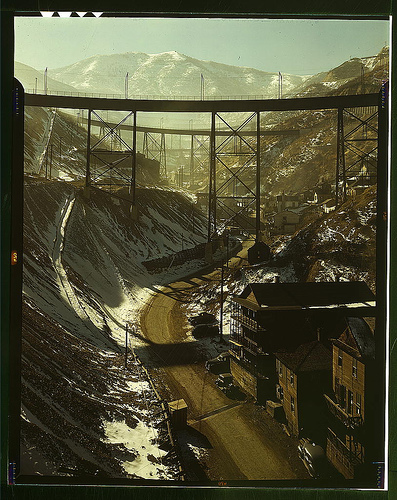This website was created for those who want to learn more about mining by participating in mine tours and visiting mine museums, and for those who just want to marvel at the sometimes spectacular excavations made my miners. From the Wikipedia entry on mining:
Mining is the extraction of valuable minerals or other geological materials from the earth, from an ore body, vein or (coal) seam. This term also includes the removal of soil. Materials recovered by mining include base metals, precious metals, iron, uranium, coal, diamonds, limestone, oil shale, rock salt and potash. Mining is required to obtain any material that cannot be grown through agricultural processes, or created artificially in a laboratory or factory. Mining in a wider sense comprises extraction of any non-renewable resource (e.g., petroleum, natural gas, or even water).
Mining of stone and metal has been done since pre-historic times. Modern mining processes involve prospecting for ore bodies, analysis of the profit potential of a proposed mine, extraction of the desired materials and finally reclamation of the land to prepare it for other uses once the mine is closed.
The nature of mining processes creates a potential negative impact on the environment both during the mining operations and for years after the mine is closed. This impact has led to most of the world”s nations adopting regulations to moderate the negative effects of mining operations. Safety has long been a concern as well, though modern practices have improved safety in mines significantly.
The Amazing Excavations section is for those who just want to marvel at the holes miners have made. The Mine Museums and Tours section should be self-explanatory.
